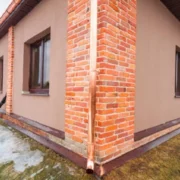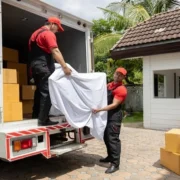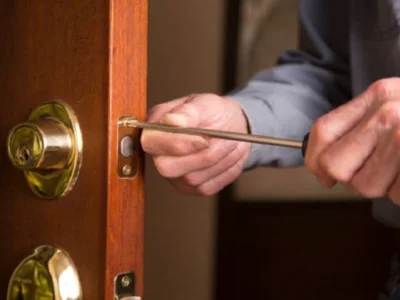The world moves more slowly in the winter, and people spend more time inside enjoying the comforts of home. In places like Chicago, where sub-zero temperatures and snowstorms are common, the holiday cheer is often tempered by the harsh realities of winter. Winter isn’t just a time for folks to drink hot cocoa by the fire, it’s also a time for them to make sure their houses are ready for the harsh weather.
You can keep your home warm and safe all winter by doing a few important things before the first snowfall.
It’s cold outside, so keep your home safe this winter with this ultimate care list!
1. Check Your Plumbing: Prevent Frozen Pipes
In the winter, frozen pipes are a regular problem that could cost a lot of money to fix. When it’s very cold, the water in the pipes can freeze and break. What does this lead to? A lot of damage, floods, and expensive repairs. Don’t worry, though. This doesn’t have to happen. Insulate any pipes that are visible first, especially those that are in places that aren’t heated, like basements, attics, and garages.
Letting taps drip a little is another thing you can do on very cold nights. The small flow of water keeps things from freezing. Also, make sure you know how to quickly turn off the water in case of an emergency. You can take a lot of preventative steps on your own, but it is strongly suggested that you hire a professional plumber to look over your plumbing system.
Knowing a reliable Chicago emergency plumber is important, especially when temperatures drop well below freezing. Any problems can be fixed quickly by getting in touch with a professional. This stops further damage from happening. Don’t forget that time is everything when it comes to frozen pipes.
2. Inspect Your Heating System
In the winter, the heating system is very important, especially in places like Chicago that get very cold. You should make sure your heating system works perfectly before the snow starts to fall.
First, have a professional check out your heater, boiler, or heat pump. Problems like broken wiring, inefficient parts, or broken thermostats can be found by an expert. It is important to regularly change the air filters because clogged filters make the system work harder, which increases the cost of energy. Also, you need to make sure that your thermostat is calibrated properly, as a broken device can make your system work less efficiently.
3. Windows and Doors Must be Sealed Properly
This is usually because of drafty windows and doors in the winter. Their presence makes your heater work harder, which raises your energy costs. Insulating your home correctly is important for keeping it warm and saving energy. Check all of your doors and windows for cracks, gaps, or worn-out locks that could let cold air gain entry.
Fixes like weatherstripping or caulking around holes are usually all that’s needed. Keep the cold out by putting draft stoppers under doors or using door screens.
4. Clean and Inspect Gutters
Gutters should really get extra care during seasonal maintenance, but they don’t always get it. Why? When drains get clogged, water can back up and freeze, which can make ice dams. Water can get into your home through these ice dams and damage the walls, ceilings, and flooring.
Before winter comes, clean out your gutters to get rid of any leaves, sticks, and other fall debris that has built up. Look for signs of damage, like gutters that are sinking or leaks, and fix them if you find any.
5. Test Smoke and Carbon Monoxide Detectors
Winter is a time when your heating system, fireplace, and other heat sources are working overtime. This increases the risk of fire and carbon monoxide poisoning. This is where smoke and carbon monoxide detectors come in to save the day.
To make sure your family is safe, press the test button on each smoke detector and listen for the warning to make sure it is working properly. If the batteries need to be replaced, do so, and if yours are old, think about getting new ones. Carbon monoxide monitors are also very important, especially if you have a fireplace or use gas or oil to heat your home. This gas has no smell or color and can kill if it is not found quickly. Make sure all of your devices are in the right place and working.
6. Inspect the Roof and Attic
Your roof protects your home from snow, ice, and freezing rain. As winter approaches, small problems on your roof can get worse, leading to leaks or even the roof falling down. It’s a good idea to check your roof for broken or missing singles before it gets cold. Take care of any weak spots on your roof right away, because snow and ice can build up quickly and increase the weight and stress on it.
So is your attic. For keeping heat inside your home and stopping ice dams from forming on the roof, make sure your attic is properly insulated. Insufficient shielding will let heat escape, melting snow on the roof. This melting snow can form dangerous ice dams at the edge of the roof, stopping water from draining and causing damage.
7. Prepare Your Fireplace or Chimney
During the winter, there’s nothing better than a cozy fireplace, but you should check to make sure it’s safe before you start using it often. If you don’t keep your stove in good shape, it could start a fire. The first thing you should do is have a professional clean and check your chimney. Over time, crescote can build up inside the chimney. Creosote can catch fire and start a dangerous chimney fire if it builds up too much.
Also, make sure that the damper on your stove is working right so that smoke can leave your home. Also, make sure you have a lot of firewood on hand and that your hearth tools, like the poker and tongs, are in good shape.
8. Trim Trees and Clear Walkways
Checking the brick structure of your house for problems is the first step. Next, take a look at what’s outside. Especially when snow and ice build up on branches, trees can be very dangerous during winter storms. Overloaded branches can break off and cause damage to your home, car, or even power lines. It’s important to check the trees around your house before winter comes and cut back any branches that are hanging over your roof, road, or walkways. To make sure you can get to your house easily in the snow, you should also clear the paths of any trash.
As difficult as winter can be, you can keep it from being a burden by keeping up with home upkeep. It’s important to remember that getting ready for winter not only keeps your house safe, but also keeps your family warm, comfortable, and stress-free.
Choice Home Warranty George Foreman in 2024










Comments